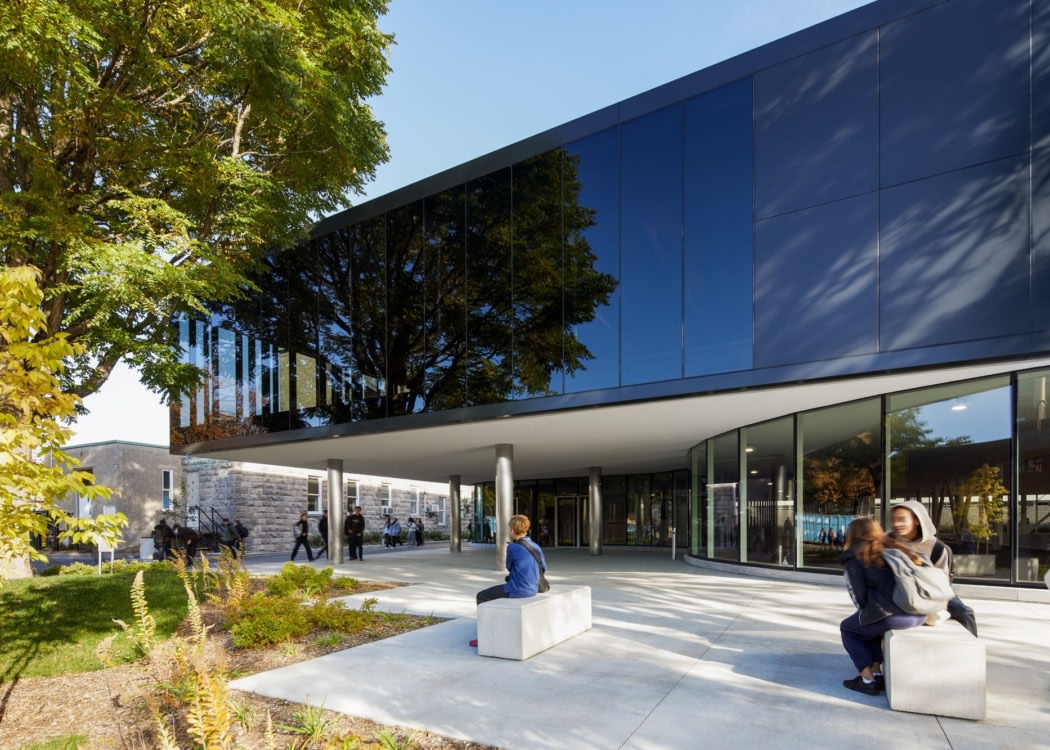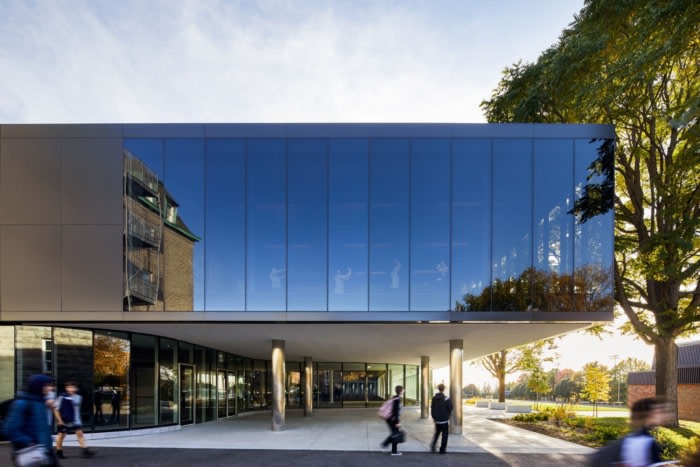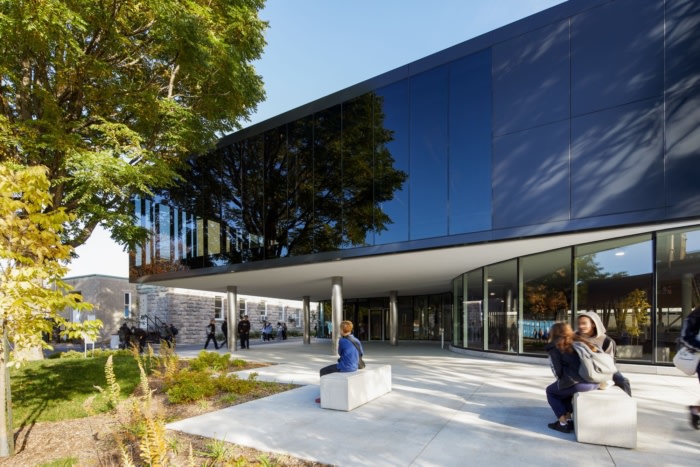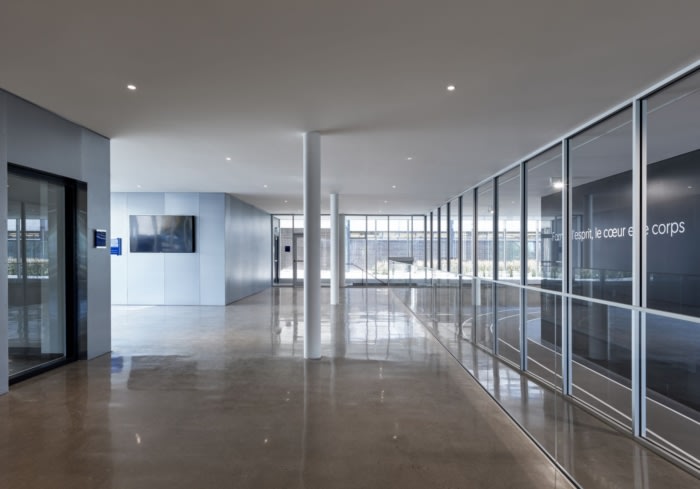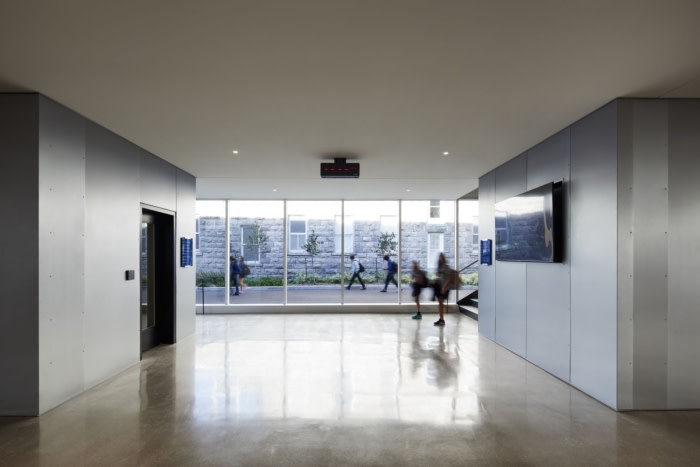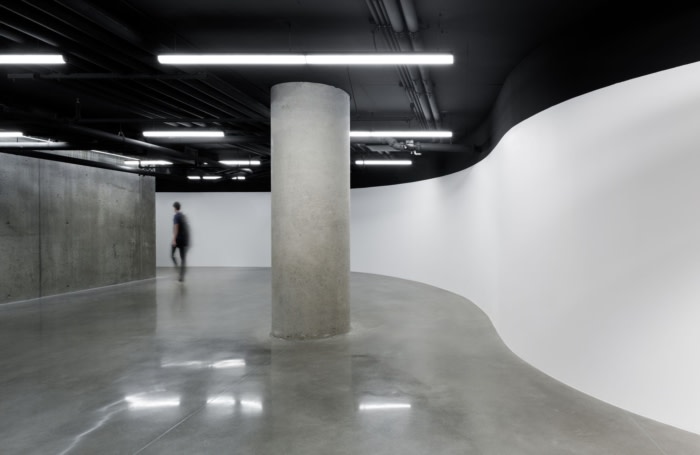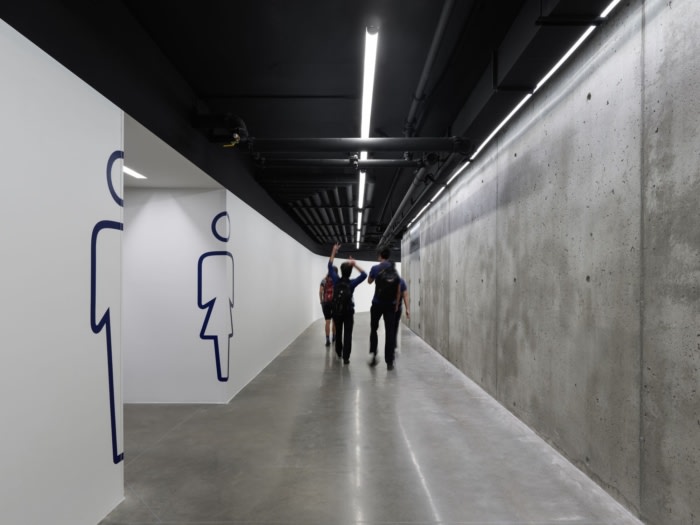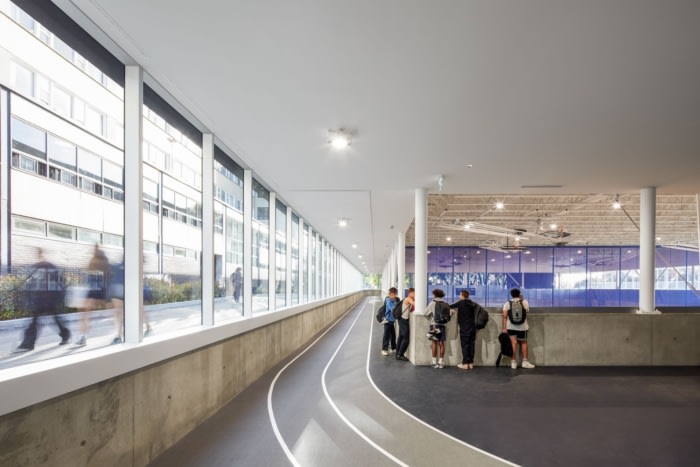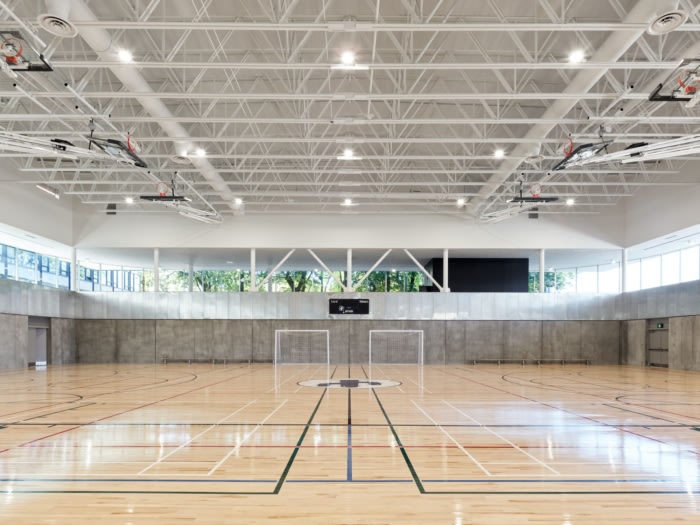Complexe Sportif et Culturel Collège Notre-Dame
ACDF Architecture designed Complexe Sportif et Culturel Collège Notre-Dame, integrating a modern sports center into a historic campus with a focus on connectivity, natural light, and heritage preservation.
ACDF Architecture, a Montreal-based, globally-inspired design practice creating experiential buildings that deliver lasting social impacts, proudly presents Complexe Sportif et Culturel Collège Notre-Dame, a new social epicentre in the beating heart of a campus founded in 1869.
Reinforcing the historic educational institution’s motto of training the mind, the heart, and the body, the new facility houses two double gymnasiums, sports team changing rooms, a training room, a running track, multifunctional rooms for dance and theatre, and a central connector hall.
Collège Notre-Dame advocates education that seeks the perfect balance between mind, heart, and body to prepare students to contribute positively to society. Given the significant increase in the number of students in recent decades, the sports and cultural facilities at Collège Notre-Dame made it difficult for the institution to maintain its mission, which includes a strong focus on sports and an abundance of cultural activities.
Collège Notre-Dame commissioned ACDF to design a new sports center that would bring its student population together and have a positive impact on the daily lives of all students. Accordingly, the new complex is positioned in the heart of the campus, at the crossroads of all pedestrian circulations connecting student life between the institution’s legacy educational buildings and its outdoor sports facilities.
Heritage first
Collège Notre-Dame forms part of Montreal’s Mont-Royal Heritage Site, a protected area comprising Mont-Royal Park, cemeteries, institutions, residential neighborhoods, and some of the largest green spaces on the island. That designation placed heritage at the heart of the intervention, echoing the thoughtful design philosophy of ACDF.Collège Notre-Dame’s expansive campus includes legacy heritage buildings that reflect varying eras of English and French-inspired architecture, including initial buildings built in the 1880s, and subsequent expansions completed in 1929. Major extensions were again added in the 1960s, infusing modernist architectural language into the campus. Remarkably, the eclectic architectural styles have evolved as a set of harmonious buildings, and ACDF endeavored to continue that legacy within the structure of a contemporary architectural concept.
Opening a window onto campus life
ACDF applied a horizontal language to the design of a massive rectangular building, with an upper level characterized by an opaque façade of anthracite-coloured aluminium panelling that conceals the facility’s mechanical systems in its corners. The rectangular upper level protrudes beyond the borders of a lower level, offering protection against direct sunlight and the elements, while enabling penetration of abundant natural light into the building.The lower level features a fully-glazed façade of curtain walls, providing direct views from the pedestrian level to overlook activities taking place inside of the new facility. Rounded corners create an oval shape for the fully-glazed lower level, injecting a greater sense of fluidity into circulation patterns around the building. Directly above the main entrance to the complex, the aluminium panelling of the upper-level blends seamlessly into darkly tinted glass, highlighting activities unfolding in the complex’s multifunctional rooms, including dance, improvisation, theatre, fencing, and more.
Seamless integration of a massive structure
Built on the Sacré-Cœur courtyard, on a downward slope descending from the campus’s main buildings, across the courtyard, and down to the football field, ACDF leveraged the challenging topography to excavate the site and erect half of the building underground, where two double gymnasiums and locker rooms are housed. In addition to being cost efficient, minimizing the building envelope helped soften the intrusion of the massive new complex by rendering it to a more human scale that is less imposing.The uneven topography also presented an opportunity to erect a natural stone wall along the lowest levels of the building, directly beneath the fully-glazed façade. The selection of natural stone pays homage to the architectural styles and palette of the surrounding heritage buildings, while further integrating the new complex as a central and unifying element of the campus.
Bidirectional vibrancy
Inside the new complex, a 360-degree running track rings the entire building at the main pedestrian level. The track encircles two sunken double gymnasiums, and the installation of an acoustic ceiling above masterfully calms the collective vibrancy of the environment. The fully-glazed façade provides a window onto all of it for passersby and, conversely, also connects track users and others on the inside with the surrounding external landscape and pedestrian traffic of campus life.Design: ACDF Architecture
Design Team: Maxime Frappier, Maxime Boily, Pierre-Olivier Jacques, Martin Champagne, Pierre-Olivier Jacques, Guillaume Morhain
Photography: Adrien Williams

